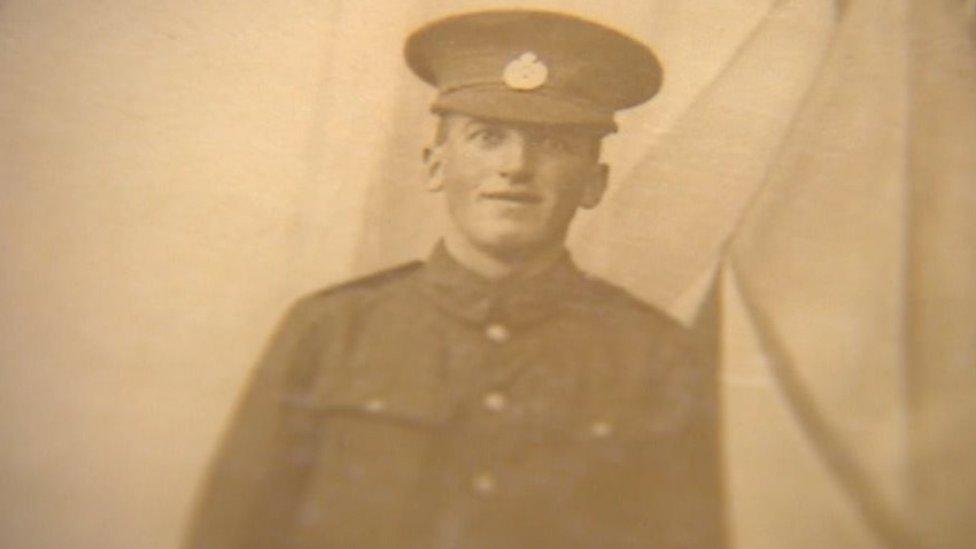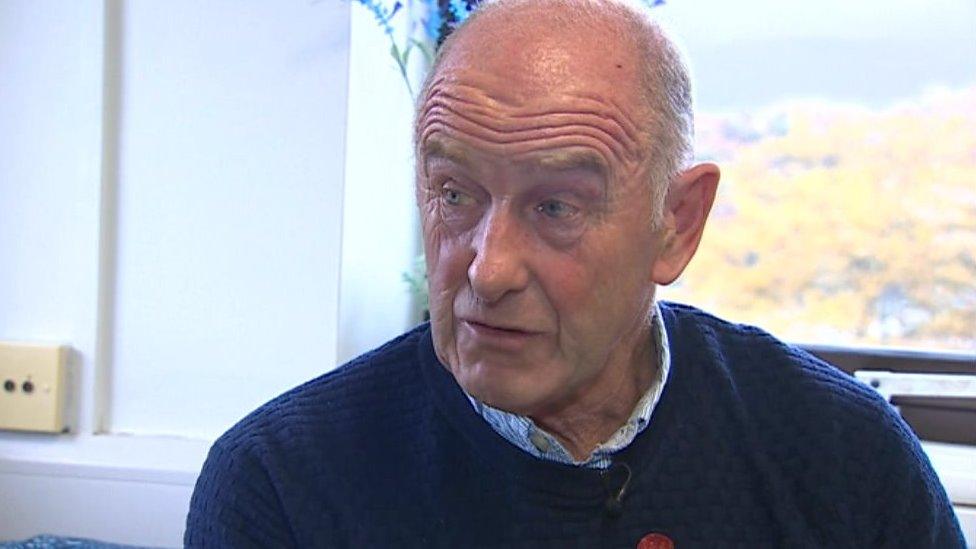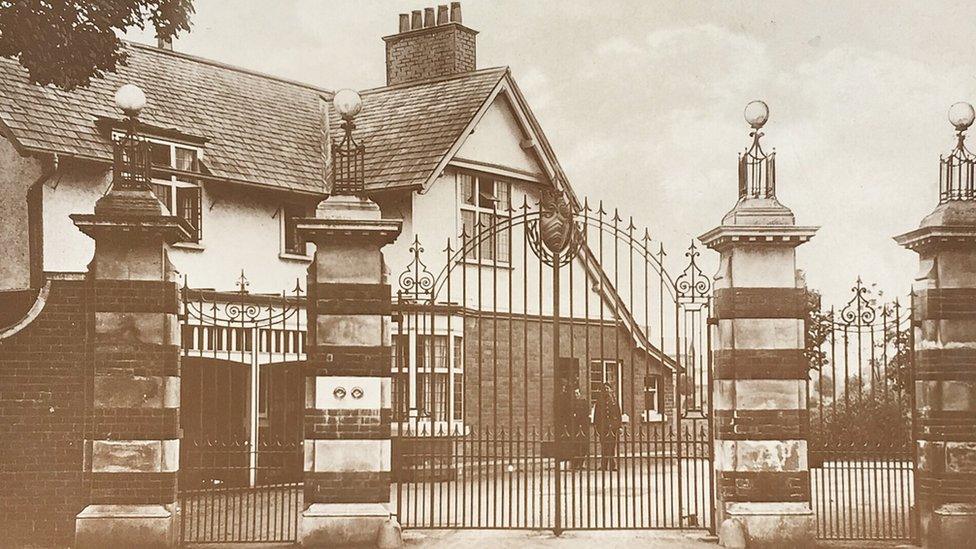Mud and bullet holes: The WW1 Welsh soldier's letter
- Published

Royal Engineer: 155380 - Haydn Gwion Morris during training in 1916
Each death during World War One was a tragedy - a brother, husband, father or lover lost to war in a foreign field. And as the world marks 100 years since Armistice Day - those private, personal stories are being kept alive to ensure the sacrifice is never forgotten. Stories such as the one told by a former Welsh headteacher Haydn Davies about his namesake - his great uncle.
Hadyn Gwion Morris lay dead in a trench in France - 23-years-old and one of the 40,000 Welsh soldiers who made the ultimate sacrifice in World War One.
It was his own brother from the small Carmarthenshire village of Hebron who found the body - they joined the Royal Engineers together in 1916, swapping coal for the Western Front.
Tucked inside the dead soldier's mud-splattered uniform, a letter from his sister Elsie - pierced by the bullet that killed him on 6 May, 1917.
"It's over 40 years since I opened the letter last," said Haydn Davies, who now lives near Bangor, Gwynedd.
"The letter has the bullet holes, the shot through the envelope, through the letter, the mud of the trenches."

Bullet holes and mud: The letter found on the soldier's body
The blue fountain pen ink and perfect copperplate handwriting is still crystal clear - punctuated by the holes made by the bullet that killed the young Welsh soldier.
The soldier's sister, the grandmother of Mr Davies, inquires about their welfare, two pages of the latest gossip from home, and a longing wish for her two brothers to return home safely.
Of course, only one brother David John Morris returned - bringing his sister's letter back with him.
"The first thing that strikes me - it's a very silly thing really - is the beautiful handwriting that they had. It's to 'my dear brother'," said Mr Davies.
"To hold that - it's 100 years old. It's a very touching record of events at the time, where the sister communicated, just wishing them all the best and telling them the local news, as though it was an everyday event."
Now retired as the headmaster of Llangefni Secondary School on Anglesey, Mr Davies now hopes to make the journey to France to the grave where his great uncle is buried.
He also wants to make sure the letter is preserved, so it can be handed down to his own family.

Hadyn Davies is 'humbled' by the letter and his brothers war service
"I feel pride that I'm holding it, but under such sad circumstances - the story is tragic. But it is a piece of history that the family is proud of."
Carefully folding the thin, fragile letter up and placing it back in the battered envelope, Mr Davies said it was just one tragic story among hundreds of thousands that were created by the war.
"As I get older I realise the importance of sharing this story, the seriousness of the story and the impact of the story.
"It's the sheer scale of the thing that does not leave you."

The Armistice 100 years on

Long read: The forgotten female soldier on the forgotten frontline
Video: War footage brought alive in colour
Interactive:, external What would you have done between 1914 and 1918?
Living history: Why 'indecent' Armistice Day parties ended

- Published9 November 2018

- Published9 November 2018
